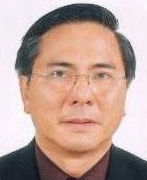

Can we begin with a brief about the vision of Vietnam Textile and Garment Group (VINATEX) as a body active in promotion of textile and garment industry in Vietnam?
Sharing the vision of developing the Vietnamese textile garment industry, Vinatex- one of the largest and the most competitive textile garment corporations in Asia concentrates on the specialization and modernization to make the leap for the added value of textile garment products.
In its set goals, Vinatex will accomplish this by carrying out two tasks. The first task is to implement three decisive programs for the sustainable, stable and long-term development of the Vietnamese textile garment industry; these are cotton planting; high-quality spinning fabrics, and human resources training. The second task is to complete capitalization of all state-owned textile garment enterprises in 2008 and capitalization of Vinatex in 2009.
Vinatex – the largest entrepreneur of the Vietnamese National Textile Garment Industry will actively join the general strategy that was set up by the whole industry. Vinatex has vision to become a corporation owned by many companies. This group foresees itself to be ranked among Top 10 Global Textile Garment Groups by 2015.
Please let us know how is Vietnamese textile and clothing industry faring presently?
Textile and garment play a very important role in Vietnam economy. With around 2500 enterprises, the textile and garment industry has made a remarkable development in the last few years. Since 2000 until now, the industry has reached an annual growth rate of 20%, generated 2 millions jobs, contributing 17% to the export turnover of the country, ranking second just after crude oil.
Despite of the fact that the year 2008 came with challenges including global financial crisis, fierce competition with textile and garment powerful countries, domestic high inflation, labor fluctuation, the first 10 months of the year 2008 witness 7.6 billion USD in textile and garment export, a growth of over 20% year-on-year. However, due to decrease of purchasing power caused by downturn in global economy, the industry’s export turnover of 2008 may not reach 9.5 billion USD as planned.
How do you visualize impacts on your textile trade if anti-dumping duties on apparel by US are activated in Jan 2009 again? And incase monitoring program is put to end by US Commerce Department, how is Vietnam ready to grab maximum opportunities thereon?
Import Monitoring Program have been conducted since Jan 2007 by the US and threat of anti-dumping case against Vietnam Textile and garment Industry cause negatively influence on future of Vietnam textile and garment sector. Many US importers and retailers have reduced and relocated their sourcing away from Vietnam to avoid the threat of unpredictable and heavy dumping duties. Numbers of Vietnamese enterprises have postponed expansion of business due to lack of orders. Similarly, the US business that have invested and set up representative office in Vietnam have stopped their investment in response to the newly risk.
If the US eliminates the Import monitoring program in the beginning of 2009, Vietnam Textile and garment industry will gain opportunity to export fairly to the US. However, in the situation of crisis and decline of purchasing power, Vietnam may not get this advantage to increase the US-bound export.
Best skills and talent form base for competitive production in these sectors. How does VINATEX assure encouragement of this aspect?
It is realized that beside factors including capital, technology, and quality of human resource play a decisive role in increase of labor productivity. Productivity is created from rather best skill and talent of managers than raising labor intensity. It is good management method to make labor productivity rising and employers’ income increase. Being aware of this, we have paid a special attention on training and improving knowledge for managers and other staffs. Moreover, we evaluate and re-arrange staffs into appropriate position annually based on their professional skills, ability and experience
Vietnamese textile apparel industry has consecutively gained relatively high growth speed of the export over the past many years; major of these exports have been to US. How will Vietnam act in the situation where there is downturn in US economy currently?
Downturn in the US economy causes decrease in purchasing power of the US consumers. Thus, Vietnam textile and garment enterprises had better diversify markets, not focus heavily on the US market. As regard to the US market, we have concentrated in improvement of high quality with reasonable price. Besides, Vietnam textile and garment enterprises will aim to quick respond, implement social responsibility and friendly environment.
Trade and Expos have proved to be vital tools in promoting the industry domestically and internationally. How would you opine on this statement?
Through Trade and Expos, enterprises get great opportunities to introduce their products to customers, promote brand names, establish and strengthen trade relationship with local and foreign buyers and partners; meet partners to exchange views and experience and information, find out competitive advantage relating to the industry; attract foreign investment, joint venture.
Could you please provide a gist on 3 programs (cotton planting, high quality fabrics weaving and human resources training) under development strategy of Vietnamese textile apparel industry? What role Vinatex is going to play in it?
Based on 3 fundamental programs: Cotton planting, high quality fabric weaving and human resources training, Vietnam textile and garment industry has implemented its goal: To develop and supply high value-added product, increase localization ratio. Vinatex is the leading group in producing and trading textile and garment. Vinatex is on a progress of equitization to increase management effectiveness and mobilize more capital in order to above-mentioned programs.
---------------------------------
DISCLAIMER: All views and opinions expressed in this column are solely of the interviewee, and they do not reflect in any way the opinion of Fibre2Fashion.com.